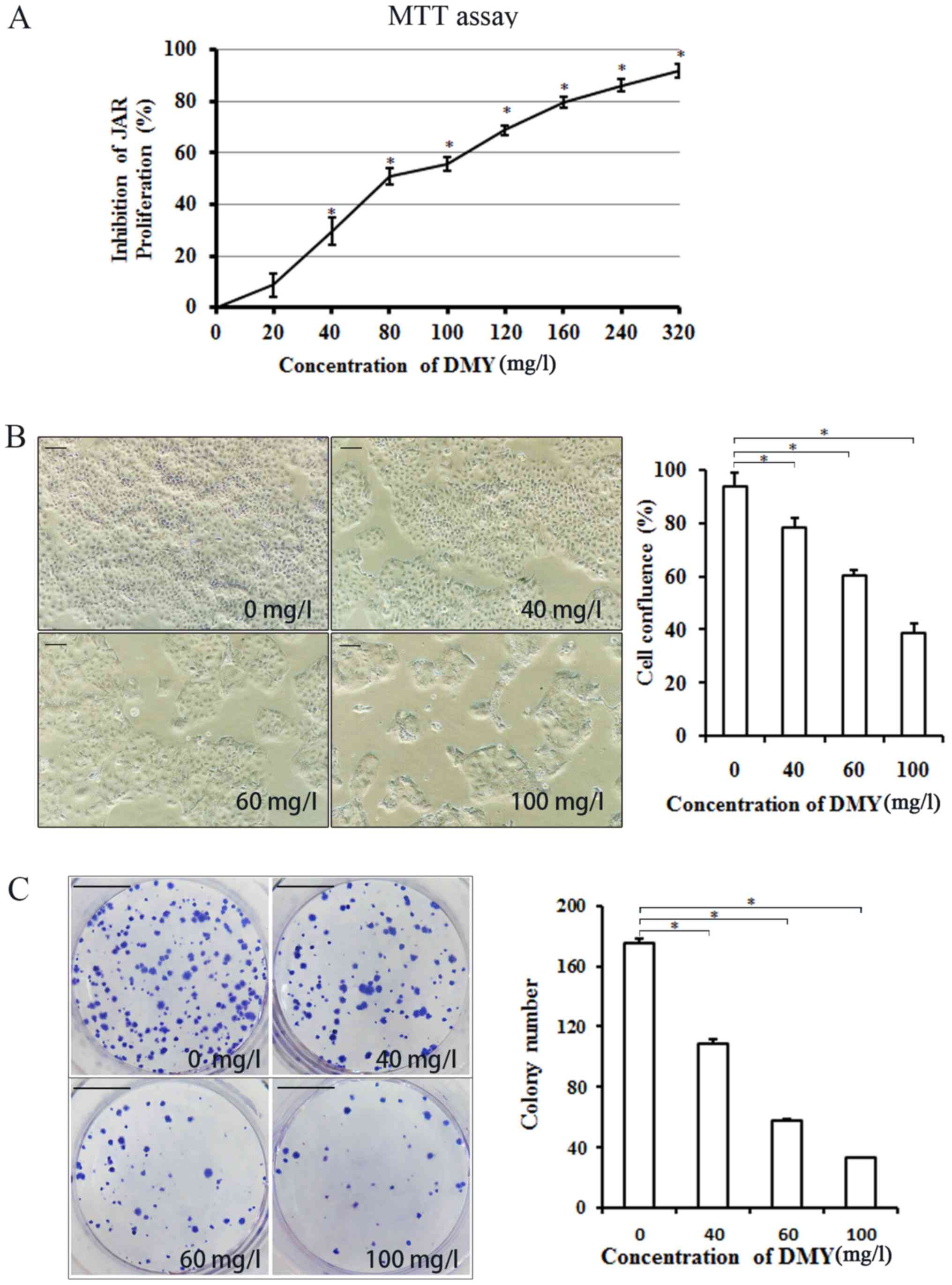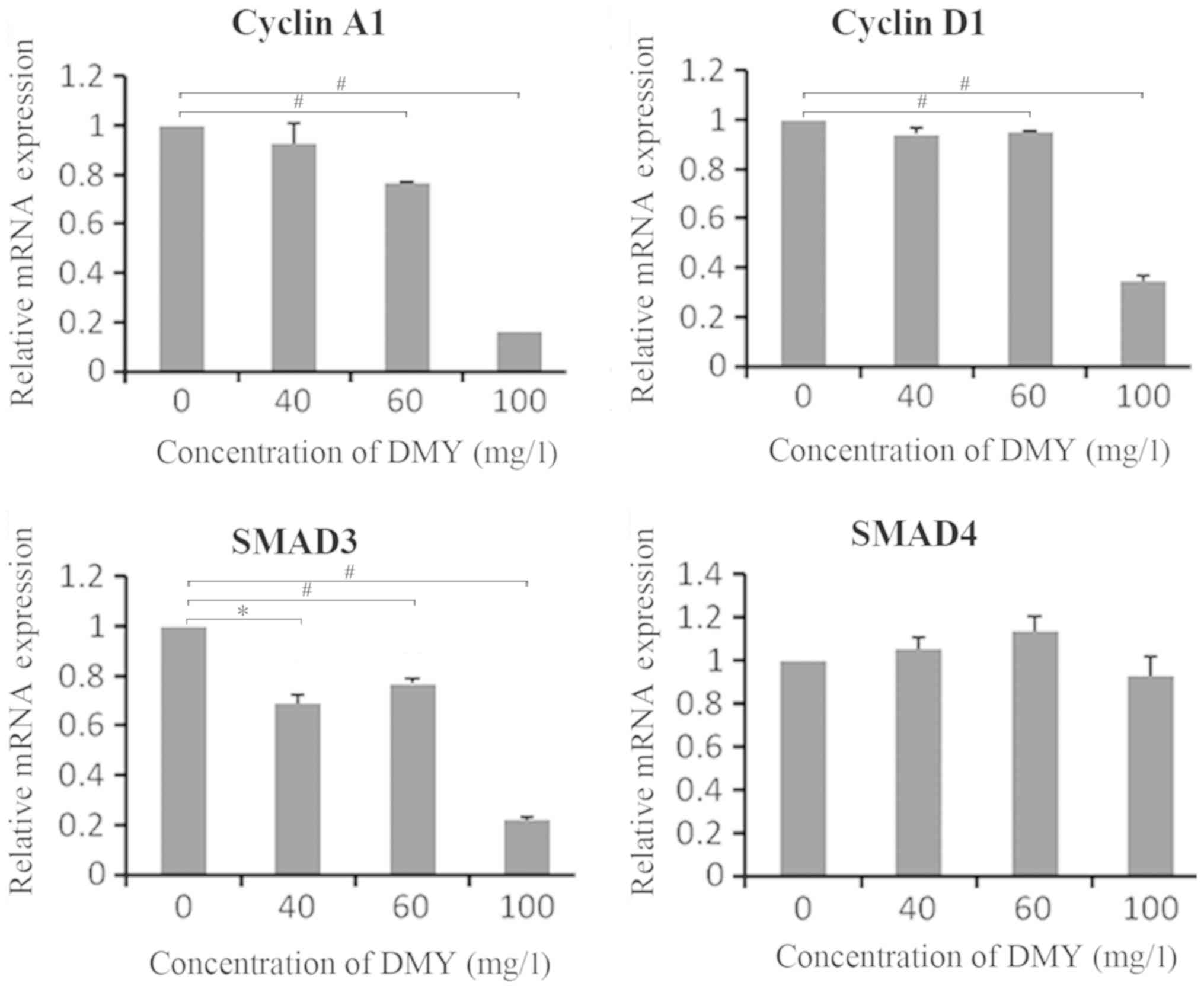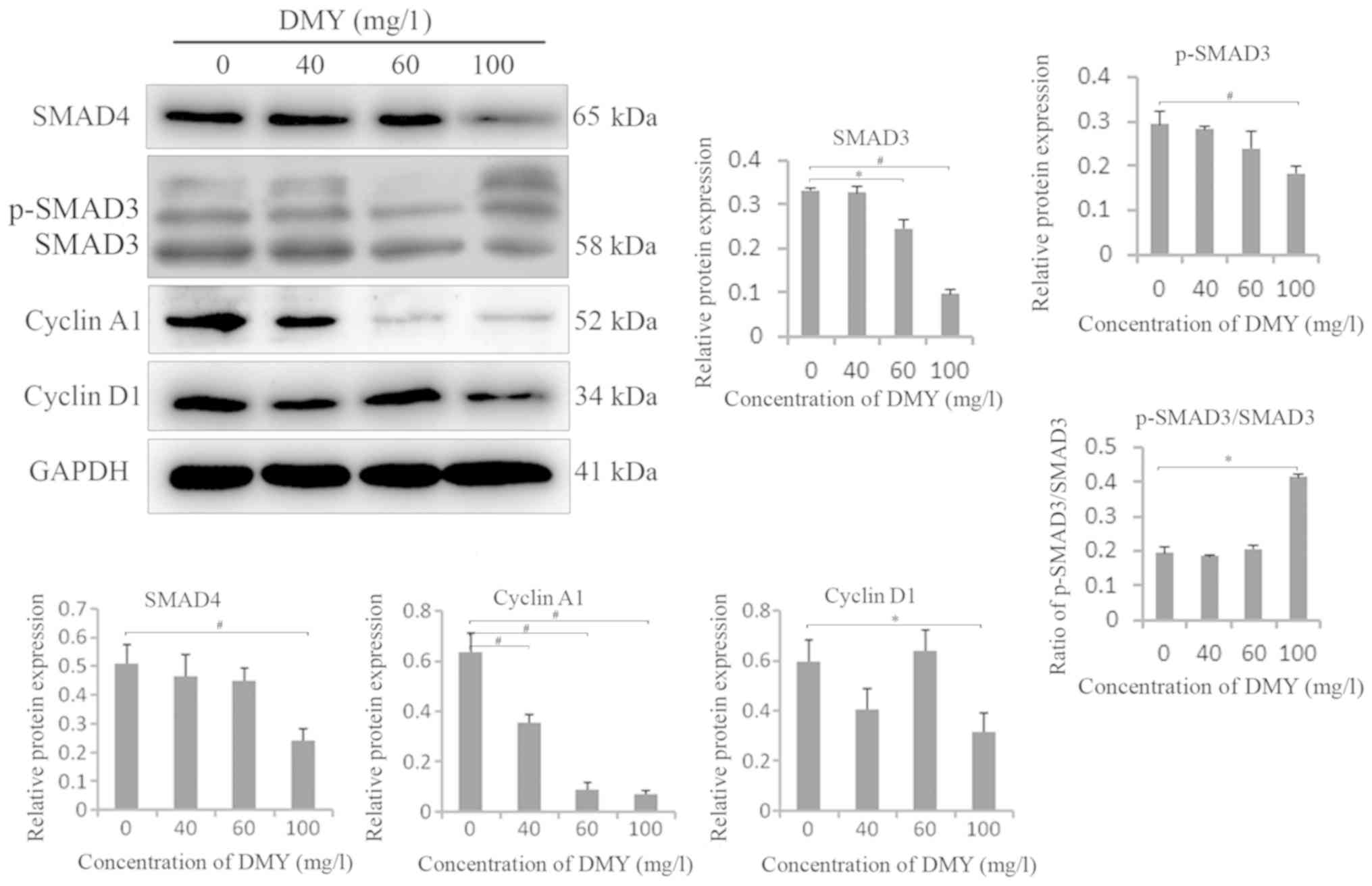|
1
|
Pires LV, Yi Y, Cheng JC, Pizzolato LS,
Cordero E, Leung PCK and Brum IS: Lapatinib inhibits
amphiregulin-induced BeWo choriocarcinoma cell proliferation by
reducing ERK1/2 and AKT signaling pathways. Anticancer Res.
39:2377–2383. 2019. View Article : Google Scholar : PubMed/NCBI
|
|
2
|
Yu S, Wu C, Tan Q and Liu H: Long
noncoding RNA H19 promotes chemotherapy resistance in
choriocarcinoma cells. J Cell Biochem. 120:15131–15144. 2019.
View Article : Google Scholar : PubMed/NCBI
|
|
3
|
Pearce H, Edwards DC, Levy JA, McGreen BH,
Mackovick L, Brennan M, McHugh M, Mapow B, Schanne FJ and Belkoff
L: Acute pulmonary hemorrhage associated with metastatic testicular
choriocarcinoma in a 46-year-old incarcerated male. Urol Ann.
11:109–112. 2019. View Article : Google Scholar : PubMed/NCBI
|
|
4
|
Breitbach GP, Sklavounos P, Veith C, Costa
SD, Kuhn W, Solomayer EF, Juhasz-Boess I and Tempfer C: Oral
etoposide for metastatic choriocarcinoma: A case report and review
of guidelines. Arch Gynecol Obstet. 299:1115–1119. 2019. View Article : Google Scholar : PubMed/NCBI
|
|
5
|
Wu C, Yu S, Tan Q, Guo P and Liu H: Role
of AhR in regulating cancer stem cell-like characteristics in
choriocarcinoma. Cell Cycle. 17:2309–2320. 2018. View Article : Google Scholar : PubMed/NCBI
|
|
6
|
Li H, Li Q, Liu Z, Yang K, Chen Z, Cheng Q
and Wu L: The versatile effects of dihydromyricetin in health. Evid
Based Complement Alternat Med. 2017:10536172017. View Article : Google Scholar : PubMed/NCBI
|
|
7
|
Jiang L, Zhang Q, Ren H, Ma S, Lu C, Liu
B, Liu J, Liang J, Li M and Zhu R: Dihydromyricetin enhances the
chemo-sensitivity of nedaplatin via regulation of the p53/Bcl-2
pathway in hepatocellular carcinoma cells. PLoS One.
10:e01249942015. View Article : Google Scholar : PubMed/NCBI
|
|
8
|
Wong IL, Wang BC, Yuan J, Duan LX, Liu Z,
Liu T, Li XM, Hu X, Zhang XY, Jiang T, et al: Potent and nontoxic
chemosensitizer of P-glycoprotein-mediated multidrug resistance in
cancer: Synthesis and evaluation of methylated epigallocatechin,
gallocatechin, and dihydromyricetin derivatives. J Med Chem.
58:4529–4549. 2015. View Article : Google Scholar : PubMed/NCBI
|
|
9
|
Kao SJ, Lee WJ, Chang JH, Chow JM, Chung
CL, Hung WY and Chien MH: Suppression of reactive oxygen
species-mediated ERK and JNK activation sensitizes
dihydromyricetin-induced mitochondrial apoptosis in human non-small
cell lung cancer. Environ Toxicol. 32:1426–1438. 2017. View Article : Google Scholar : PubMed/NCBI
|
|
10
|
Zhou DZ, Sun HY, Yue JQ, Peng Y, Chen YM
and Zhong ZJ: Dihydromyricetin induces apoptosis and cytoprotective
autophagy through ROS-NF-κB signalling in human melanoma cells.
Free Radic Res. 51:517–528. 2017. View Article : Google Scholar : PubMed/NCBI
|
|
11
|
Huang X, Lian T, Guan X, Liu B, Hao S,
Zhang J, Bao S, Tan X and Zhu R: Dihydromyricetin reduces TGF-β via
P53 activation-dependent mechanism in hepatocellular carcinoma
HepG2 cells. Protein Pept Lett. 24:419–424. 2017. View Article : Google Scholar : PubMed/NCBI
|
|
12
|
Zhang QY, Li R, Zeng GF, Liu B, Liu J, Shu
Y, Liu ZK, Qiu ZD, Wang DJ, Miao HL, et al: Dihydromyricetin
inhibits migration and invasion of hepatoma cells through
regulation of MMP-9 expression. World J Gastroenterol.
20:10082–10093. 2014. View Article : Google Scholar : PubMed/NCBI
|
|
13
|
Zuo Y, Xu Q, Lu Y, Sun D, Wang K, Lei Y,
Liang X and Li Y: Dihydromyricetin induces apoptosis in a human
choriocarcinoma cell line. Oncol Lett. 16:4229–4234.
2018.PubMed/NCBI
|
|
14
|
Alberts B, Bray D, Hopkin K, Johnson A,
Lewis J, Raff M, Roberts K and Walter P: Essential cell biology.
(Fourth). Garland Science. Taylor & Francis Group, LLC. (USA).
2014.
|
|
15
|
Li Y, Xu Q, Zhang Z, Liu S, Shi C and Tan
Y: The impact of TGF-β1 on the mRNA expression of TβR I, TβR II,
Smad4 and the invasiveness of the JEG-3 placental choriocarcinoma
cell line. Oncol Lett. 4:1344–1348. 2012. View Article : Google Scholar : PubMed/NCBI
|
|
16
|
Tan Y, Xu Q, Li Y, Mao X and Zhang K:
Crosstalk between the p38 and TGF-β signaling pathways through
TβRI, TβRII and Smad3 expression in plancental choriocarcinoma
JEG-3 cells. Oncol Lett. 8:1307–1311. 2014. View Article : Google Scholar : PubMed/NCBI
|
|
17
|
Giulietti A, Overbergh L, Valckx D,
Decallonne B, Bouillon R and Mathieu C: An overview of real-time
quantitative PCR: Applications to quantify cytokine gene
expression. Methods. 25:386–401. 2001. View Article : Google Scholar : PubMed/NCBI
|
|
18
|
Evans T, Rosenthal ET, Youngblom J, Distel
D and Hunt T: Cyclin: A protein specified by maternal mRNA in sea
urchin eggs that is destroyed at each cleavage division. Cell.
33:389–396. 1983. View Article : Google Scholar : PubMed/NCBI
|
|
19
|
Fung TK and Poon RY: A roller coaster ride
with the mitotic cyclins. Semin Cell Dev Biol. 16:335–342. 2005.
View Article : Google Scholar : PubMed/NCBI
|
|
20
|
Motokura T, Bloom T, Kim HG, Jüppner H,
Ruderman JV, Kronenberg HM and Arnold A: A novel cyclin encoded by
a bcl1-linked candidate oncogene. Nature. 350:512–515. 1991.
View Article : Google Scholar : PubMed/NCBI
|
|
21
|
Masclef L, Dehennaut V, Mortuaire M,
Schulz C, Leturcq M, Lefebvre T and Vercoutter-Edouart AS: Cyclin
D1 stability is partly controlled by O-GlcNAcylation. Front
Endocrinol (Lausanne). 10:1062019. View Article : Google Scholar : PubMed/NCBI
|
|
22
|
Yan KX, Liu BC, Shi XL, You BR and Xu M:
Role of cyclinD1 and CDK4 in the carcinogenesis induced by silica.
Biomed Environ Sci. 18:286–296. 2005.PubMed/NCBI
|
|
23
|
Hsu CC, Chen CH, Hsu TI, Hung JJ, Ko JL,
Zhang B, Lee YC, Chen HK, Chang WC and Lin DY: The 58-kda
microspherule protein (MSP58) represses human telomerase reverse
transcriptase (hTERT) gene expression and cell proliferation by
interacting with telomerase transcriptional element-interacting
factor (TEIF). Biochim Biophys Acta. 1843:565–579. 2014. View Article : Google Scholar : PubMed/NCBI
|
|
24
|
Kang X, Wang H, Li Y, Xiao Y, Zhao L,
Zhang T, Zhou S, Zhou X, Li Y, Shou Z, et al: Alantolactone induces
apoptosis through ROS-mediated AKT pathway and inhibition of
PINK1-mediated mitophagy in human HepG2 cells. Artif Cells Nanomed
Biotechnol. 47:1961–1970. 2019. View Article : Google Scholar : PubMed/NCBI
|
|
25
|
Wu Z, Wang C, Huang M, Tao Z, Yan W and Du
Y: Naturally occurring sesquiterpene lactone-santonin, exerts
anticancer effects in multi-drug resistant breast cancer cells by
inducing mitochondrial mediated apoptosis, caspase activation, cell
cycle arrest, and by targeting Ras/Raf/MEK/ERK signaling pathway.
Med Sci Monit. 25:3676–3682. 2019. View Article : Google Scholar : PubMed/NCBI
|
|
26
|
Si L, Jia Y, Lin R, Jian W, Yu Q and Yang
S: MicroRNA-27a regulates the proliferation, chemosensitivity and
invasion of human ovarian cancer cell lines by targeting Cullin 5.
Arch Biochem Biophys. 668:9–15. 2019. View Article : Google Scholar : PubMed/NCBI
|
|
27
|
Mao Z, Shen X, Dong P, Liu G, Pan S, Sun
X, Hu H, Pan L and Huang J: Fucosterol exerts antiproliferative
effects on human lung cancer cells by inducing apoptosis, cell
cycle arrest and targeting of Raf/MEK/ERK signalling pathway.
Phytomedicine. 61:1528092019. View Article : Google Scholar : PubMed/NCBI
|
|
28
|
Sun W, Guo F and Liu M: Up-regulated WDR5
promotes gastric cancer formation by induced cyclin D1 expression.
J Cell Biochem. 119:3304–3316. 2018. View Article : Google Scholar : PubMed/NCBI
|
|
29
|
Zhou J, Zhang C, Zhou B and Jiang D:
miR-183 modulated cell proliferation and apoptosis in ovarian
cancer through the TGF-β/Smad4 signaling pathway. Int J Mol Med.
43:1734–1746. 2019.PubMed/NCBI
|
|
30
|
Sun L, Dong Z, Gu H, Guo Z and Yu Z:
TINAGL1 promotes hepatocellular carcinogenesis through the
activation of TGF-β signaling-medicated VEGF expression. Cancer
Manag Res. 11:767–775. 2019. View Article : Google Scholar : PubMed/NCBI
|
|
31
|
Shi Y and Massagué J: Mechanisms of
TGF-beta signaling from cell membrane to the nucleus. Cell.
113:685–700. 2003. View Article : Google Scholar : PubMed/NCBI
|
|
32
|
Zuo Y, Fu Z, Hu Y, Li Y, Xu Q, Sun D and
Tan Y: Effects of transforming growth factor-β1 on the
proliferation and invasion of the HTR-8/SVneo cell line. Oncol
Lett. 8:2187–2192. 2014. View Article : Google Scholar : PubMed/NCBI
|
|
33
|
Li Q, Liu X and Zhao C: Smad4 gene
silencing enhances the chemosensitivity of human lymphoma cells to
adriamycin via inhibition of the activation of transforming growth
factor β signaling pathway. J Cell Biochem. 120:15098–15105. 2019.
View Article : Google Scholar : PubMed/NCBI
|


















